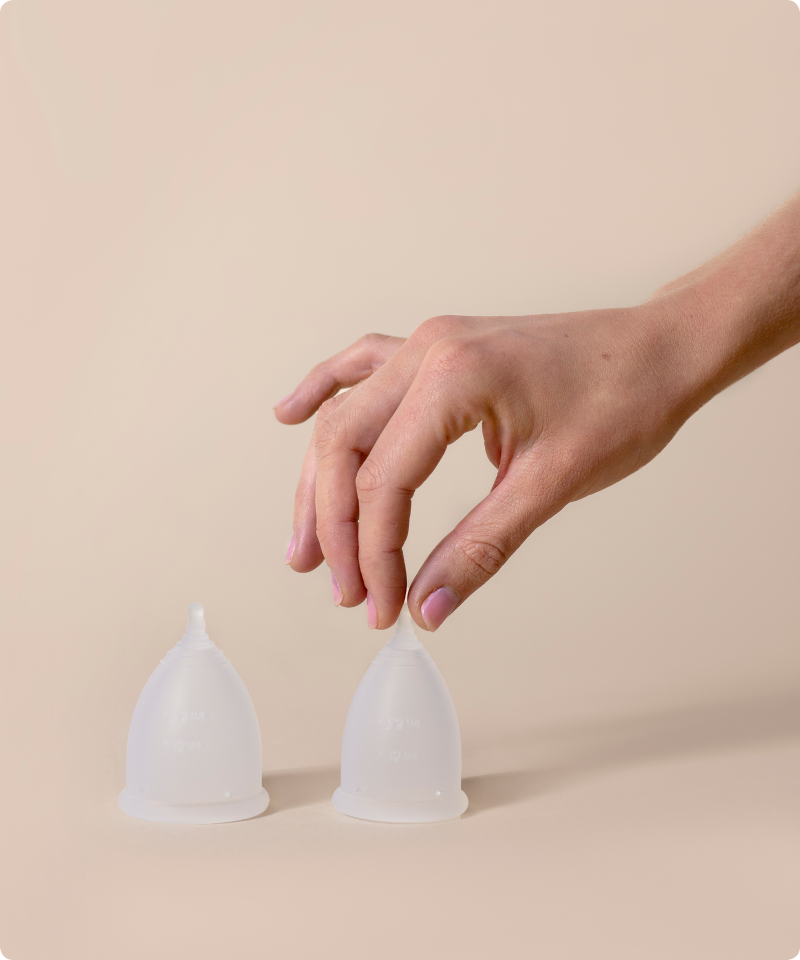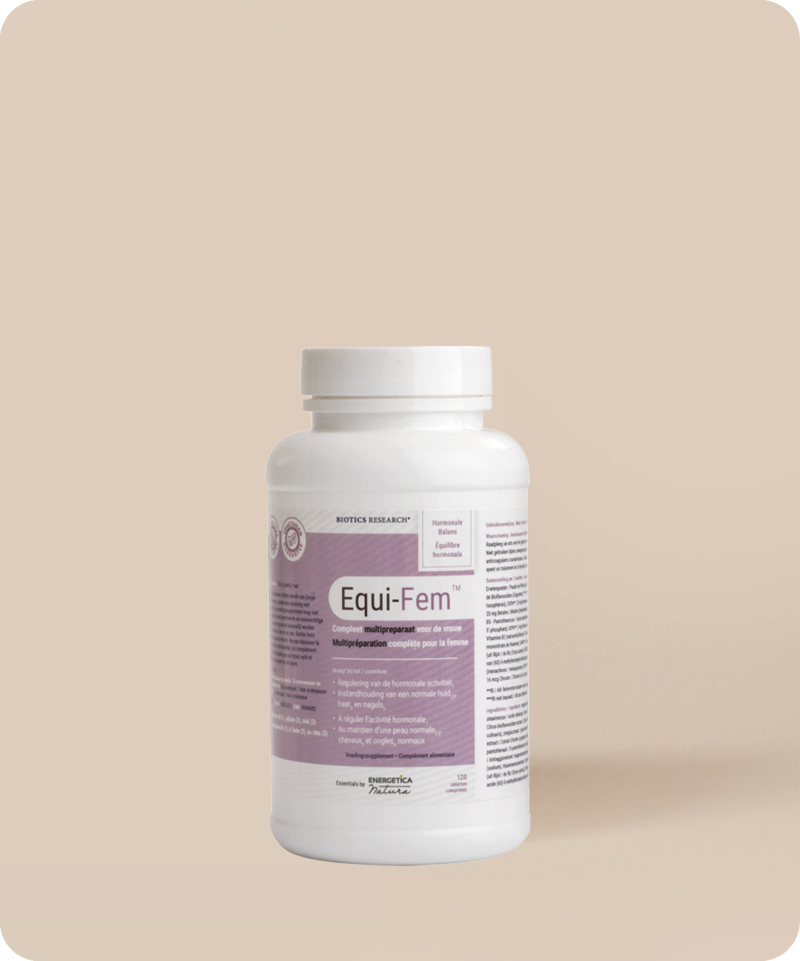Heavy menstrual bleeding, a bloody serious problem
Do you recognize those days where you just can't get much done because you’re on your period? This can be annoying, but it’s good to know you’re not the only one: it happens to almost one third of all women. But some women between the ages of 35 and 55 are being held back by their periods even more because they suffer from Heavy Menstrual Bleeding (HMB). But what exactly is this condition that can impact your daily life so much?
What are the symptoms of HMB?
When you lose more than 80ml of blood during your period, you can speak of a heavy period or heavy menstruation. It doesn't have to be the case, but most often you’ll experience HMB after you’re 35 years old, for example when you stop taking the pill. When you experience symptoms it’s important to get them checked out, because they can often be treated. Cycle starts at the beginning and looks at the causes of HMB and what you can do about it (yourself).
A lot of people feel like they bleed a lot during their period, but it’s difficult to really know for sure. A tampon doesn’t only absorb blood, but also vaginal discharge. It makes it seem like the bloodloss is a lot worse than it actually is. With pads and tampons, the rule is that if you have to change your pads and/or tampon at least every hour/two hours, there may be heavy bleeding. It’s a bit easier to see when you use a menstrual cup. Most cups display the number of milliliters, so you can see exactly how much you are bleeding.
What are the causes of HMB?
Hormonal imbalance
It sounds really fancy, but a hormonal imbalance basically means that there’s an incorrect ratio between your female hormones estrogen and progesterone. It’s really prevalent, especially in young women who just started their period or women in the perimenopause, but it can also occur due to chronic stress and/or your lifestyle. And one of the most common symptoms of hormonal imbalance is, you probably guessed it already, heavy bleeding.
What is the treatment for a hormonal imbalance?
Lifestyle
You can decrease the disbalance by reducing your stress levels and changing your lifestyle. You could also try to switch up your diet, start a workout plan, and try to sleep well. Often, this has a positive effect on your hormonal balance.
What is the effect of chronic stress
on your body and mind?
Read moreHormones
Would you rather have a hormonal solution? That’s also possible. You can try to improve the hormonal balance by taking the pill, but we advise you to be well informed about possible side effects. If you’re going through perimenopause it might be helpful to get a so-called endometrial ablation. This is a treatment where they remove the inner lining of your uterus. They do this because the thinner the lining, the less you bleed during your period. After you get this treatment, you’ll experience normal, light or even no menstrual bleeding and you’ll usually also have less pain during your period. This does sound like a good treatment, but it’s not recommended for everyone. Especially not for (young) women who want to have children, because getting pregnant after this procedure will come with great risks.
Myoma
Myoma, also known as fibroids, are benign lumps in the muscle wall of the uterus that mainly consist of muscle tissue and connective tissues. These lumps can develop outside the uterus but also in the uterine wall or the uterine cavity. Unfortunately, how and why these lumps develop is still a mystery. But what we do know is that they grow faster under the influence of hormones. Fibroids come in all shapes and sizes: from one that’s a few millimeters big to one that weighs more than a kilo. They’re usually not dangerous, but, oh boy, can they be annoying. This is because fibroids can cause heavy bleeding, among other things. Do you have one or multiple fibroids? After you get the diagnosis, the growth of the fibroids will be monitored. If the fibroids stopped growing you only have to go for check ups if your symptoms flare up again.
Everything you need to know about fibroids,
what they are, and what you can do about them.
Read moreWhat is the treatment for a myoma?
If the fibroids get in the way or cause other medical problems, you can have them removed. This is fortunately without too much risk thanks to some nice new techniques. A procedure called embolization, in which they close the blood vessels to the fibroid, is often already enough to get rid of it. When the fibroid protrudes into the uterine cavity, you can choose to have a myoma resection. The gynecologist then inserts an instrument into your uterus through the vagina and removes the fibroids or polyps. On average, it takes around 10 minutes to remove a fibroid of 3 cm. It’s a commonly used treatment for HMB. You can still get pregnant after both treatments. However, there is a greater chance of early perimenopause after embolization. So, if you still have a desire to have children this is not the treatment for you.
Read a more extensive explanation about the various treatment options here.
Polyps
Polyps are benign mucosal growths attached to the lining of the uterus with a stalk that can grow into the uterus and into the cervical canal. They kind of look like little mushrooms and they might start bleeding when they grow. You often don’t notice anything when a polyp grows in your uterus, but you could also experience symptoms like heavy bleeding. We don’t exactly know why polyps grow in the uterus, but we do know that they’re very sensitive to estrogen and react to it in the same way as the cervical mucus does. When the level of estrogen increases, the polyps will also grow.
What is the treatment for a polyp?
They can be removed with a MyoSure treatment, but there’s a chance you have to remove them more than once because polyps can grow back. The chance that they grow back is not that big. Especially not if the cause, hormonal imbalance, is treated well.
Endometrium
The endometrium is the innermost lining layer on the inside of your uterus and it consists of two layers. The first layer (the basal layer) is always there. The layer on top of that is called the functional layer, and it gets thicker during your cycle due to the estrogen levels. Progesterone then causes mucous glands to form, creating the perfect place for a fertilized egg. If the egg isn’t fertilized and you don't get pregnant, the functional layer is taken away by blood: et voila, menstruation happens.
In some women, the cervical mucus is thicker than in other women. If there’s a thicker layer you usually experience more blood loss during your period. So if you want to experience less blood loss, it’s helpful to try and see if you can do something about this.
What is the treatment for a thicker endometrium?
The most common treatment against a thicker lining is hormonal treatment. If this doesn't work or you don’t want this, the cervical mucus can also be removed. In some cases, you can opt for a hysteroscopic removal and then they’ll remove the mucous membrane with electrically charged loops.
Blood disorder
Very occasionally, HMB is caused by a coagulation (clotting) disorder. This means that your body isn’t making enough clotting proteins or that the platelets aren’t working properly, so your blood doesn't clot properly and you continue to bleed longer than necessary. This can generally be treated pretty well by a hematologist in the hospital.
What is the treatment for a coagulation disorder?
If you have a mild blood disorder, it may be sufficient to go on the pill or get an IUD. You can also take medicines that reduce the bleeding.
Endometriosis
About 1 in 10 women has endometriosis, a chronic condition in which pieces of endometrial-like tissue build up outside the uterine cavity. The annoying thing is that the pieces of tissues also behave like endometrium, and therefore they also react to hormonal changes in your body. Just like the tissue inside the uterus, it also thickens in preparation for pregnancy and begins to bleed after about four weeks if there’s no fertilization. This can cause painful periods and (sometimes) heavy bleeding.
What is the treatment for endometriosis?
There are several treatment options to reduce endometriosis. Doctors often prefer treatment with medication. Medication, such as the pill with progesterone, influences the female hormone levels, which in turn makes the endometrium thin and inactive. This allows the area where endometriosis grows to calm down. If the pill has no effect and the severe pain symptoms continue, doctors often prescribe hormone tablets or injections, which induces an artificial and temporary perimenopause. But also adjustments to your lifestyle, especially your nutrition, can have a positive influence. We have to warn you though, because this doesn’t work for everybody.
Linda (48) has severe endometriosis
Read moreAdenomyosis
Adenomyosis is a form of endometriosis. It’s a chronic condition where endometrial tissue occurs deeper into the muscular wall of the uterus. This basically turns your uterus into a menstruating sponge. If you suffer from adenomyosis, you might experience some severe symptoms such as heavy and painful periods, chronic abdominal pain, and fertility problems. It can have a significant influance on your life.
Doctors don’t exactly know what causes adenomyosis yet. One theory is that something goes wrong with the healing process after the endometrium has been damaged and tries to repair itself. Another theory is that genes, hormones and your immune system are the cause of it.
What is the treatment for adenomyosis?
Women with adenomyosis often benefit from taking the pill or getting an IUD. Unfortunately, the effect of this is only temporary and most often women eventually choose to have their uterus removed completely. But if you still want to get pregnant that’s far from ideal, so you can also choose to have a keyhole surgery where they surgically remove an adenomyoma.
Photo credits: Berlinboudoir


























